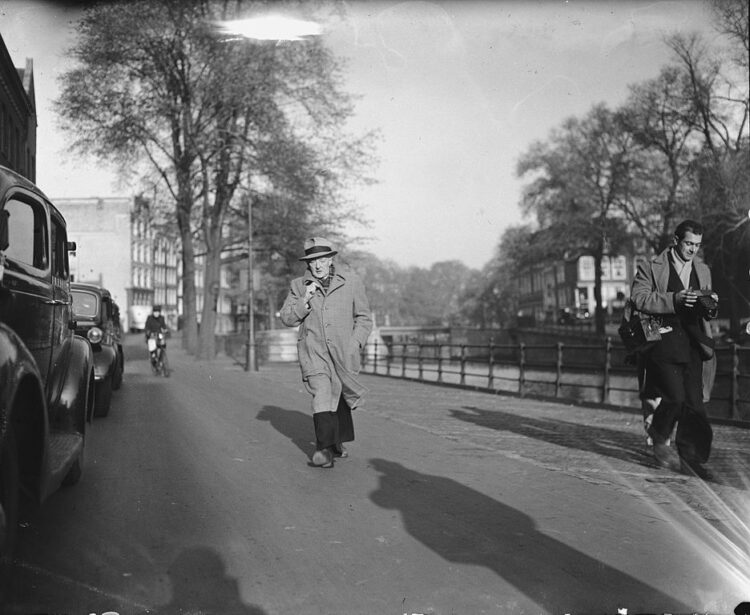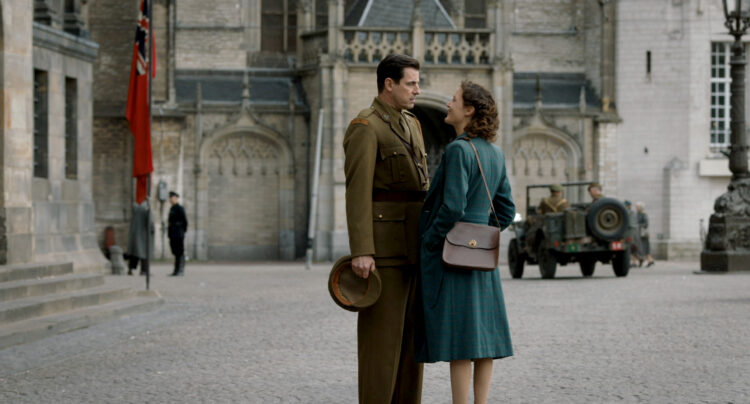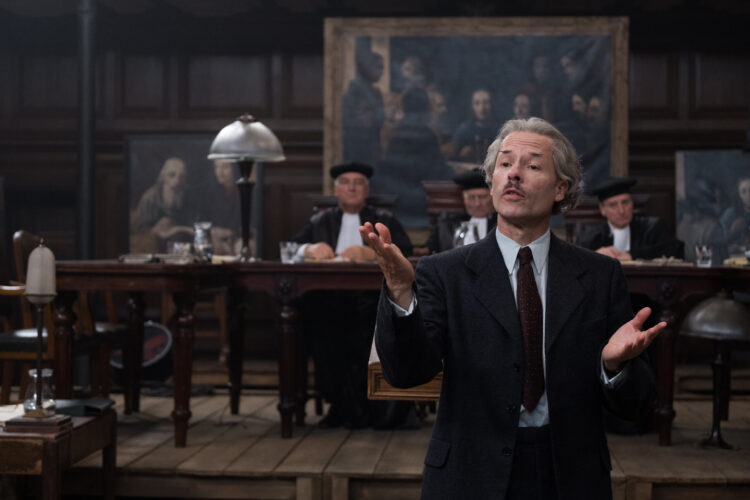Dan Friedkin’s The Last Vermeer unfolds in Amsterdam after World War II as liberated Holland comes to terms with the legacy of the brutal five-year German occupation. Based on a true story heightened by astonishing twists and turns, this vivid drama grapples with a maze of interrelated issues ranging from Nazi-looted art to Holland’s conduct under the Nazi boot.
The central figure, Han Van Meegeren, is a painter and art collector who moved in pro-German circles during that period. His claim to fame or infamy turned on his transactional relationship with one of the key figures in the Nazi hierarchy.
In a deal that rocked the art world, he traded an extraordinarily valuable painting by the Dutch master Johannes Vermeer in exchange for 137 paintings confiscated by the Nazis from mainly European Jewish collectors. The high-ranking Nazi who acquired Christ with the Adulteress was none other than Hermann Goring, the commander of the Luftwaffe and one of Adolf Hitler’s closest confidants.

In the wake of the war, Dutch collaborators were dealt with harshly. Charged with having worked hand in glove with the Germans, Van Meegeren was arrested and put on trial. Still other collaborators were not given the benefit of the doubt. In one sharply-observed scene in the first few minutes of the movie, Friedkin recreates this tense and volatile atmosphere as an identified collaborator is summarily shot by a firing squad.
The Last Vermeer, which opens in Canadian theatres on November 20, pits Van Meegeren (Guy Pearce) against Joseph Piller (Claes Bang), a Dutch Jewish investigator who fought with the resistance movement and is now working for the Allies. Piller’s task is to ferret out collaborators and recover works of Jewish-owned art that the Nazis seized with the assistance of Dutch nationals.

Piller, being convinced that Van Meegeren collaborated with the Germans, tracks him down and throws him into prison. At Van Meegeren’s request, he arranges for painting supplies to be sent to his grimy cell, hoping this act of kindness will induce him to be cooperative.
Van Meegeren, played to perfection by Pearce, is a slippery, complex character who’s hard to pin down. As far as Piller is concerned, he’s either a satan or a saint. One of Van Meegeren’s rivals contemptuously describes him as a “third-rate artist and a first-class opportunist,” which is both true and untrue.
The truth is far more complicated, as Piller discovers. Having grown to trust Piller, whom Claes portrays competently, Van Meegeren discloses an astounding secret that alters his heretofore adversarial relationship with Piller.

This information is of the utmost importance during Van Meegeren’s sensational trial. His guilt or innocence hinges on one pivotal matter that Piller and a defence lawyer exploit to the hilt. As a steely-eyed prosecutor attempts to smear Van Meegeren’s reputation, Piller upends his argument with one devastating rapier thrust that brings him to his feet. Piller rejoices, but subsequently learns that Van Meegeren is wilier than he could ever have imagined.
The Last Vermeer is slow to gain momentum, but as it accelerates all the elements click neatly into focus, underscoring the theme that self-preservation trumps all other considerations, and that Dutch collaboration with the Nazis was not a minor phenomenon.
